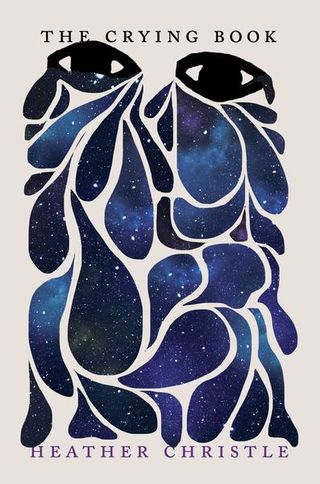
Bipolar Disorder
Why Do We Cry?
A new memoir ponders the role of tears.
Posted November 5, 2019 Reviewed by Gary Drevitch

No tears are alike. I have had patients whose faces contort with grief as they openly weep and others who allow thin lines to trickle down their cheeks while their voice stays calm and even. Some sit comfortably in their pain and some apologize for crying as if it's the first time it's ever happened in my office. There are some who shed at least a few tears every time I see them while others remain stoic for years until something finally breaks through the bulwarks they have erected.
Many such patients came to mind as I read Heather Christle's The Crying Book. Christle is a poet, and her prose shows it. You will surely end the book knowing much more about tears than when you started, including the facts that there are three different types of tears suited to different functions, and if every person on the earth were to cry exactly 55 tears it would fill an Olympic-sized swimming pool.
The Crying Book is not a mere repository of facts. It is also a chronicle of Christle navigating her diagnosis of cyclothymia, a milder form of bipolar disorder that is nonetheless serious and often chronic. She shares her tears at the suicide of a friend, her pregnancy and the birth of her daughter, throughout the hard work of motherhood. As someone with two children under the age of three in the home, I appreciated the keen detail with which she chronicles the often-unseen difficulties of parenthood.
Christle is also aware that, as a white woman, the idea of "white woman's tears" carries particular baggage. As she writes, “Whether they exist on the face or in the mind, the tears of a white woman can shift a room’s gravity. They set others falling to help her, to correct and punish those who would dare make her weep.”
On the most basic level, tears are a form of communication. They can elicit expressions of empathy, feelings of guilt, or even laughter depending upon the person and the situation. Christle is right to note the ways in which tears can be weaponized, most often against people of color, but I want to take pains to separate that very real problem from the lingering societal stigma around grief.
Most of my patients have found it difficult to cry in front of me, and I understand why. We’re often uncomfortable with any public expression of strong emotion, particularly when said emotion is sadness. At its root I believe this is due to the fact that we don’t really know what to do or say when someone is crying—often there is nothing one can do—so we prefer to avoid it whenever possible.
When a patient begins crying I view my primary task as sitting with them without looking away, letting the weight of their sadness settle. It is a privilege for someone to feel comfortable enough with you to be so emotionally naked. Upon concluding The Crying Book, I felt much the same as Christle invites us into her sadness and along the way manages to unlock the beauty within.

